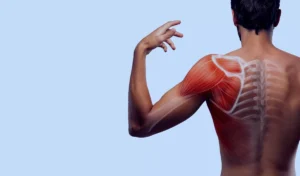
The last few months have proven to be catastrophic for global health and development. Sector-wide Funding Cuts and a Lack of Alternative Options, and a Pushback on Critical Rights, Threten the Gains Made Over Recent Decades.

This is when access to quality sexual and reproductive health services, particularly for women and girls, continues to be indequate. And Maternal Deaths Remain UnaccepTably High. As per the latest who estimates, a maternal death Occurred Nearly Every two minutes in 2023, and every day in 2023, over 700 women died from preventable couses related to pregnancy and childbirtha. Who also Estimates that globally, One in Seven 10- To 19-Year-Elds Experiences A Mental Health Issue, Accounting for 15% of the Global Burden of Disease in this Age Group. Depression, Anxiety, and Behavioral Disorders are among the Leading Causes of Illness and Disability Among Adolesments. Suicide is the third leading cause of death among 15- to 19-year-olds. According to Unicef, Globally in 2023, An Estimated 13% of Adolescent Girls and Young Women Gave Birth Before Age 18.
Global Commitments Such as the Sustainable Development Goals (SDGS) and Every Woman Every Child Initiative have Driven Progress, Yet We Are Not on Track to Meet Our Targets by 2030. The cost of inactation Too high. Between now and 2050, it is estimated that the world will lose over $ 110 trillion in potential benefits if we fail to invest in adolescent well-buring alone.
Change must begin with three key shifts. First, we must put women, child, and adolescents at the center of policies and investments. We must prioritise and investment in health systems and interventions that are people-countd, inclusive, and resilient, particularly for that who have gotly ben lefts. This include scaling up integrated srhr services, mental health support, and nutrition interventions. Second, we must ensure Youth-Driven and Youth-Co-Owned Solutions. Adolescents must not be Seen as Passive Beneficiaries but as Co-Creators of the Systems and Services they use. When Young People are Empowered to Lead-Through Youth-Led Accountability, Advocacy, and Research-We see smarter, more sustainable results. Third, we must strengthen partners and accountability. Governments, Civil Society, The Private Sector, and Multilateral Actor must work togeether in partnership, through shared action, resources, and decision-making.
India offers a powerful example of What’s Possible. It has reduced Maternal Mortality from 130 per 100,000 live births in 2014-16 to 97 per 100,000 live births in 2018-20, and expanded access to care through initiatives Surakshit matritva abhiyan, which promote institutional delivers and access to skilled care. Child Health has also also after Seen Marked Progress Through Programmes Like Mission Indradhanush, Expanding Immunization Coverage, and Poshan Abhiyaan, Addressing Malnutritation at Scale. For Adolescents, The Rashtriya Kishor Swasthya Karyakram (RKSK) has created a strong platform for delivering age-apropriate health services.
As the largest alliance for women, children, and adolescents, partnership for maternal, newborn and child health (PMNCH) Is Bringing togeing togeing togers to Focus on the Need for URGENT and SWIFT IGENTATION OF THE WOROLD Health Assembly Resolution on Maternal and Child Health, Which Calls for Strengthed Health Systems, Increased Investments, and ENHANCED ACCOUNTATITY. We have the tools. We have the evidence. Now, we must act – with urgency, with boldness, and in solidarity. A healthier, more equitable world isn’t a luxury-it’s a health, a must-have.
Rajat Khosla is Executive Director, PMNCH, and Halen Clark, PMNCH Board Chair and Former Prime Minister, New Zealand. The views expressed are personal




